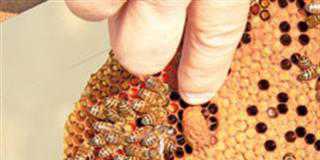If one examines the occurrence of diseases that are reported, such as African and Asiatic red water, anaplasmosis, lumpy skin disease, three-day stiff sickness and many other bacterial and viral diseases, one comes to the conclusion that vaccination programmes are not in place. Consult your veterinarian so that measures can be put in place to prevent the outbreak of diseases on the farm.
Internal parasites
- Roundworms: Serious problems due to wireworm infestations were received from Mpumalanga, Limpopo, Gauteng, North West, Free State, KwaZulu-Natal, Eastern Cape, Western Cape and Northern Cape. Wireworm resistance to drugs was also reported.
- Brown stomach-worm infestation was reported from the KZN Midlands and Tsitsikamma.
- Long-necked bankruptworm infestation was reported from Cradock; and eye worm (Thelazia rhodesii) infestation from Hoopstad and Wesselsbron.
Download the March Livestock Disease Trends Map.
Tapeworms
Reports of infestations in lambs and calves were received from Mpumalanga, Limpopo, Gauteng, Free State, KZN, Eastern Cape and Western Cape. Young animals especially should be observed for clinical signs such as diarrhoea and pot belly. Remember animals become infested when they eat infected grass mites and are not infected via their mother’s milk or some other way.
Parafilaria
Cattle with bleeding spots were reported in KZN. At slaughter these lesions will be removed and farmers will lose revenue. Animals should be treated 70 days before slaughter to allow the lesions to heal.
Flukes
Study reports from abattoirs to see whether animals slaughtered were infested with liver fluke and discuss control measures with your vet. Reports of liver fluke infestations were received from Mpumalanga, Free State and Eastern Cape. An increase in the occurrence of liver fluke was reported from Cradock, in areas along the Fish River scheme. Immature conical flukes cause severe diarrhoea. Be on the lookout for animals with profuse diarrhoea after being moved to camps where there are wet vleis or dams where the infected water snails are present. Reports were received from Mpumalanga, Free State, KZN and Western Cape.
Cysticercosis (measles)
Measles are constant findings in slaughter stock and farmers should strive to prevent infection of animals.
Coccidiosis
Infections were reported from: Mpumalanga, Gauteng, Limpopo, North West, Free State, KZN, Eastern Cape and Western Cape. Wet and muddy conditions are ideal for young animals to become infected with this parasite.
External parasites
- Ticks: Severe blue tick infestations were received from all provinces except the Northern Cape. These ticks cause anaemia and transmit African and Asiatic red water, anaplasmosis and lumpy skin disease. Assess the efficacy of control programmes with your vet.
- Bont or heartwater tick: the presence of this tick was reported in Mpumalanga, Limpopo, Gauteng, North West, KZN and Eastern Cape. With the increase in game farming, hosts such as warthogs and kudu are bringing this tick species into new areas.
- Bont legged-tick: reports received from Mpumalanga, Gauteng, North West, Free State and KZN.
The brown-ear is a three-host tick and hundreds of adults attached to the ears are a common sight this time of the year. These ticks were reported from Mpumalanga, Limpopo, Gauteng, Free State, KZN, Eastern Cape and Western Cape. If ears are not treated regularly maggots infest wounds and animals may lose ears and even die of tick toxicosis. These ticks can also transmit Theileria, the cause of Corridor disease.
A few reports of red-legged ticks were received from Mpumalanga, Limpopo, North West, Free State and KZN, and reports of paralysis ticks were received from the Free State.
Discuss the life cycles of these ticks and how to control them with your vet, keeping in mind the selection for tick resistance.
Actives used to control ticks are: organophosphates, amidines, pyrethroids, tick development inhibitors (fluazuron) and, for blue ticks, the macrocyclic lactones.
- Lice: Only a few reports were received as lice are mainly a winter problem. Farmers with wool sheep should check their sheep regularly for lice as they cause serious disturbance of the fleece. There is serious red lice resistance to drugs and therefore farmers should be aware of not buying in sheep with lice.
- Mites: Be on the lookout for disturbances in wool and this should be reported to the State Veterinarian as stated in the law. Sheep scab is a state-controlled disease. Contact your State Veterinarian to find out if there are affected farms in your area. Biosecurity measures to prevent sheep becoming infected should be in place at all times.
- Flies, midges & mosquitoes: Reported from many parts of the country. Be on the lookout for diseases carried by these insects. Screw-worm infestations were reported from areas where severe brown-ear tick damage was prevalent. If animals are not treated timeously, deaths may occur.
Tick-borne diseases
- African red water: Reports were received from all provinces except North West and the Northern Cape. Serious losses occurred in many provinces.
- Asiatic red water:this killer disease is spreading and reports were received from all provinces except the Northern Cape.
Note: Both these diseases can be prevented by vaccinating animals. Discuss vaccination programmes with your vet. Asiatic red water is a killer disease and proper steps should be taken to control it! Be especially on the alert when introducing new animals into red water areas.
- Anaplasmosis: Reports of outbreaks and mortalities were received from all provinces except Limpopo. Spread by blue ticks, biting flies and needles (vaccinations). Discuss vaccinating cattle prophylactically with your vet.
- Heartwater: Causes serious problems in areas where the bont tick is prevalent. Reports were received from all nine provinces.
- Sweating sickness: Due to the increasing numbers of bont-legged ticks, reports of sweating sickness, caused by the toxin of these ticks, were received from Gauteng, North West, Free State and KwaZulu-Natal.
Insect-transmitted diseases
- Lumpy skin disease: Incidences reported in Mpumalanga, Limpopo, Gauteng, North West, Free State and KZN. As vaccines are available to control this disease one can only wonder why vaccination programmes are not being instituted.
- Three day stiff sickness: Vaccine is not available and serious economic losses were recorded. Outbreaks occurred in Mpumalanga, Limpopo, Gauteng, North West, Free State, KwaZulu-Natal, Eastern Cape.
- Blue tongue: Reports were received from all provinces. Due to the unavailability of vaccine, young unvaccinated sheep were especially hard hit.
Rift Valley Fever and Wesselsbron
No reports were received of these diseases.
Venereal diseases
These diseases are causing havoc in our country. Trichomonosis was reported from Mpumalanga, North West, Free State, KZN and Eastern Cape. Bulls positive for vibriosis were reported from North West and KZN. It’s of the utmost importance that biosecurity measures are in place. Bulls should be tested about six weeks after the breeding season in order for farmers to have ample time to plan for the next breeding season with their vets.
Bacterial diseases
The following diseases were reported:
- Blackquarter (Mpumalanga, Limpopo, North West, Free State, KZN, Eastern Cape).
- Pulpy kidney (Mpumalanga, Limpopo, North West, Free State, KwaZulu-Natal, Eastern Cape, Western Cape).
- Swelled head (Mpumalanga, Gauteng, Free State).
- Red gut in cattle (North West, Free State, KZN, Eastern Cape, Western Cape).
- Blood gut in sheep (Mpumalanga, Free State, KwaZulu-Natal, Eastern Cape).
- Tetanus (North West, Free State, Eastern Cape).
- Salmonellosis (Free State, KZN, Eastern Cape).
- Bovine brucellosis (Mpumalanga, Gauteng, North West, Free State, KZN, Western Cape). As long as every single cattle farmer in this country does not make an effort to control and eradicate this disease, reports will be documented every month and it could be your herd!
- Ovine brucellosis (Mpumalanga, Eastern Cape, Western Cape).
- Septicaemia (Mpumalanga, KZN, Eastern Cape, Western Cape).
- Colibacillosis (Limpopo, North West, Northern Cape).
In addition, there were reports of Johnes disease (Western Cape), leptospirosis (Mpumalanga, KZN), Pseudomonas aeruginosa (KZN), enzootic abortion (Gauteng, North West), lumpy wool (Mpumalanga, Free State), uterine gangrene (North West), Fusibacterium necrophorum (Free State).
Note: There are vaccines for the prevention of the majority of bacterial diseases. Discuss the risk factors for the diseases in your area with your vet and put together a control programme.
Fungal disease
Reports of ringworm were received from Mpumalanga, Gauteng, North West, Free State, KZN and Eastern Cape.
Viral disease
The following were reported: Bovine malignant catarrh (snotsiekte), rabies, infectious bovine rhinotracheitis (IBR), bovine viral diarrhoea (BVD), enzootic bovine leucosis (EBL), orf and warts.
Poisonings
The following toxicities were reported: cardiac glycoside (slangkop, tulip), cestrum (ink berry), cynanchum (klimop), facial eczema, gifblaar, krimpsiekte, prussic acid, seneciosis, vermeersiekte, mycotoxicosis, urea, snake bite, blue-green algae, copper poisoning, closantel, liver poisoning, lead, fluoor and ionophor.
Draw up a protocol with your vet on how to treat these poisonings should they occur on your farm.
Feedlot report
Sheep feedlots
- Resistant wireworm infestation in sheep arriving at feedlots from the Highveld.
- A few cases of opthalmia occurred in new sheep entering the feedlot.
- Diarrhoea and some mortalities occurred as a result of a Salmonella infection. Sheep surviving after treatment remained weak due to damage of the intestinal tract.
- A few mortalities due to blue tongue occurred in young stud ewes although they were vaccinated with the available vaccine.
- A few sheep died due to a clostridial infection in the throat area after injury caused by the ill handling of a dosing gun.
Cattle feedlots
- Three-day stiff sickness outbreaks were widespread in feedlots. Juvenile cattle recovered well. At abattoirs haemorrhages were seen around joints in a few cattle.
- Pneumonia cases higher compared to previous months. Lighter and wet calves caused the most problems.
- A few cases of blackquarter were diagnosed.
- Mortalities due to bloat, acidosis and redgut were recorded.
- Anaplasmosis and red water cases occurred but most cases were diagnosed at necropsy.













